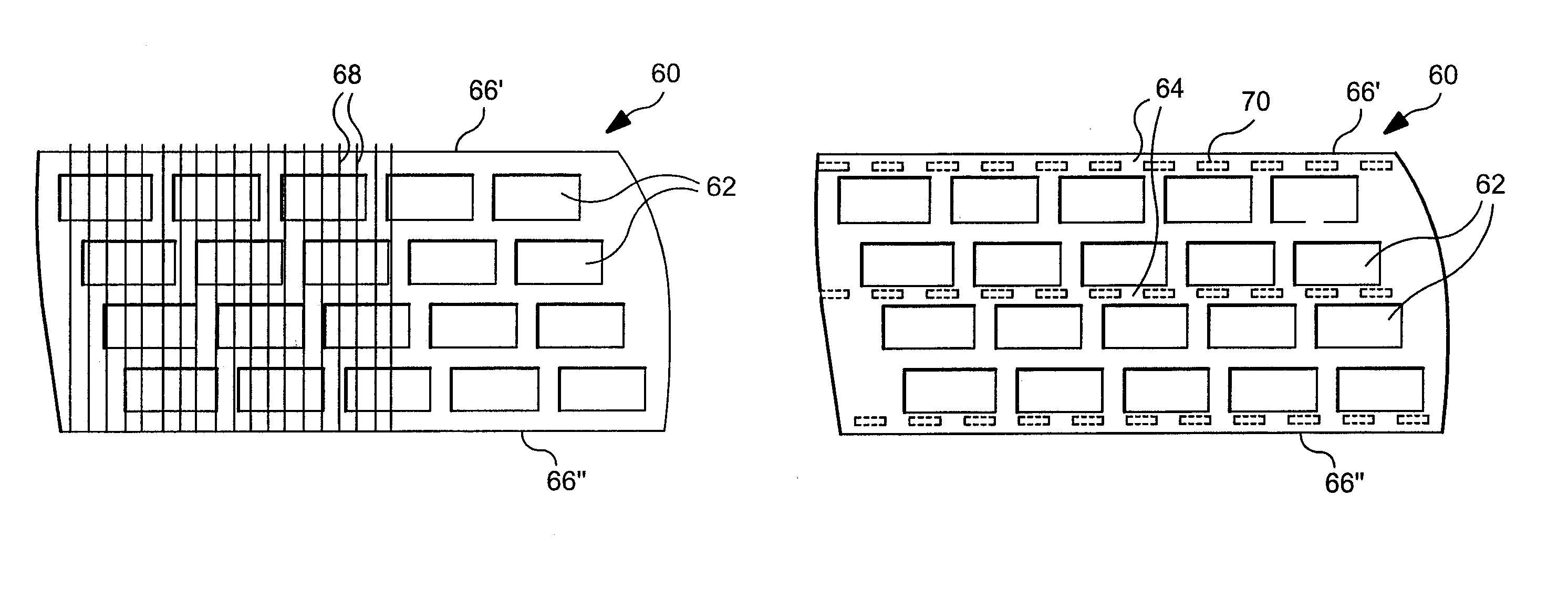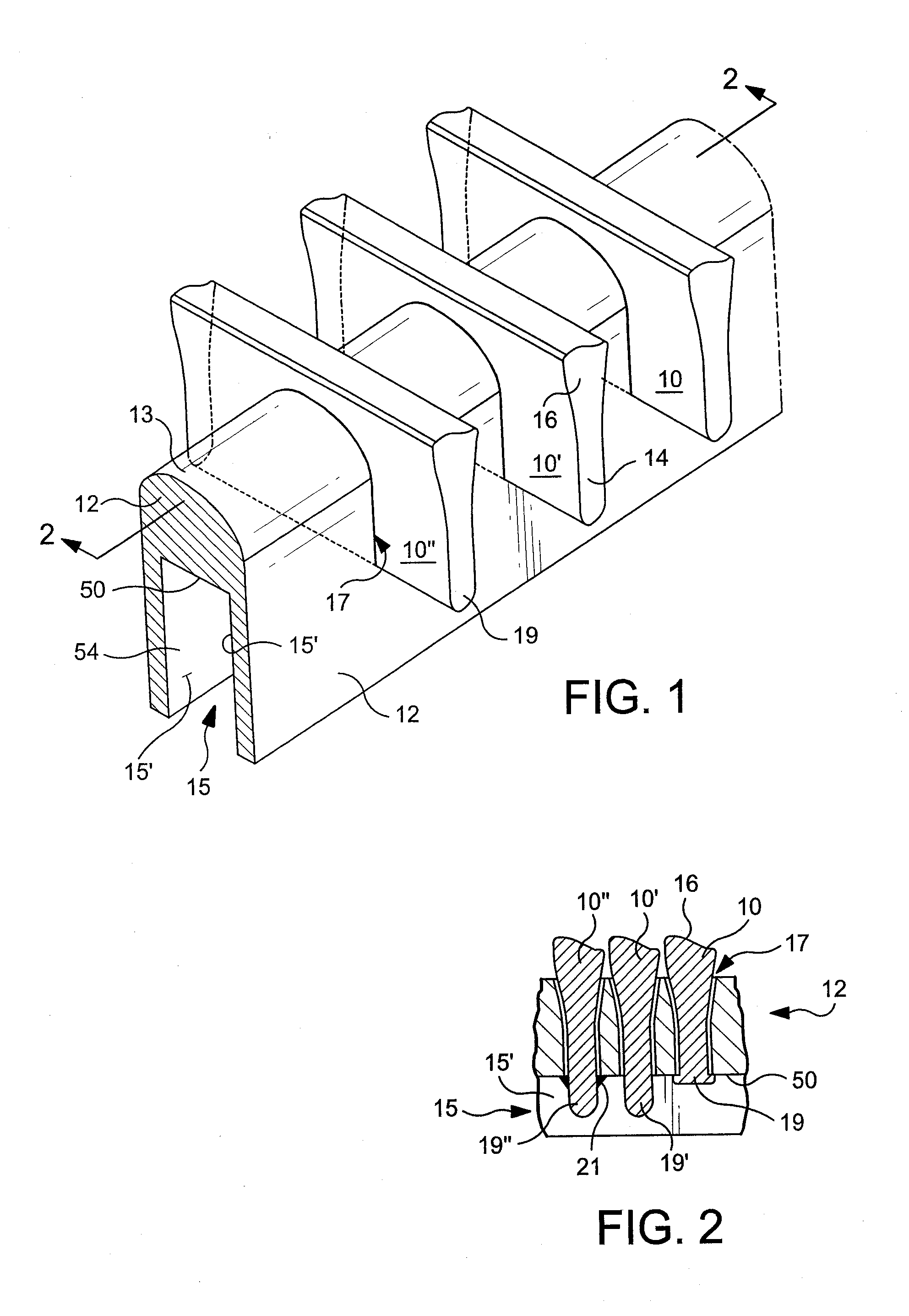Screening device, such as a screen cylinder, and method of manufacture of the screening device
a screening device and screen cylinder technology, applied in the direction of screening, stationary filtering element filtering, screening, etc., can solve the problems of variable distortion, thermal stress and burr, change in the opening width of the screening device between adjacent wires, etc., and achieve the effect of small width and good toleran
- Summary
- Abstract
- Description
- Claims
- Application Information
AI Technical Summary
Benefits of technology
Problems solved by technology
Method used
Image
Examples
Embodiment Construction
[0051]FIG. 1 shows schematically a top / side view of a portion of a screening device according to a preferred embodiment of the present invention. In FIG. 1, three filter wires 10, 10′ and 10″ are positioned onto a partly solid support bar 12, having an elongated cross section with a rounded top part 13, facing accept flow, and a bottom part with a cavity 15, having side walls 15′, therein.
[0052]The filter wires 10, 10′,10″ have narrow lower parts 14, i.e., down-stream portions, and funnel shaped upward widening top parts 16, i.e., upstream portions. The wires are mounted onto the support bar by inserting the narrow lower parts 14 in slots 17 formed through the top or upstream side of the support bar 12. The slots 17 are substantially perpendicular to the longitudinal axis of the support bar 12. The slots 17 are also substantially perpendicular to the top surface of the support bar, for the filter wires to reach radially outward from the support bar.
[0053]The bottom edges 19 of the f...
PUM
| Property | Measurement | Unit |
|---|---|---|
| thickness | aaaaa | aaaaa |
| width | aaaaa | aaaaa |
| width | aaaaa | aaaaa |
Abstract
Description
Claims
Application Information
 Login to View More
Login to View More - R&D
- Intellectual Property
- Life Sciences
- Materials
- Tech Scout
- Unparalleled Data Quality
- Higher Quality Content
- 60% Fewer Hallucinations
Browse by: Latest US Patents, China's latest patents, Technical Efficacy Thesaurus, Application Domain, Technology Topic, Popular Technical Reports.
© 2025 PatSnap. All rights reserved.Legal|Privacy policy|Modern Slavery Act Transparency Statement|Sitemap|About US| Contact US: help@patsnap.com



